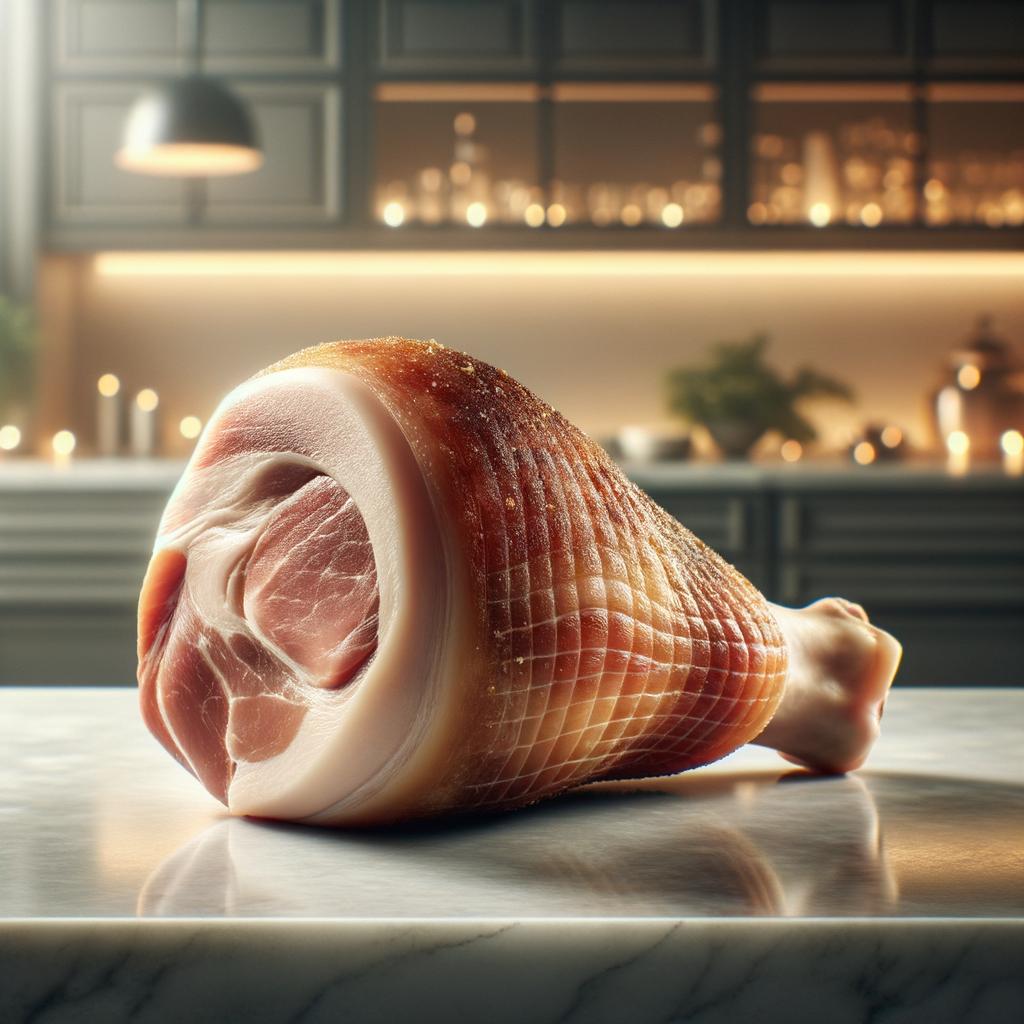Ham Hock

Description
The ham hock, also known as pork knuckle, is a humble yet deeply flavorful cut of pork. It's a thick, meaty joint that connects the pig's foot to its leg, often smoked or cured before it reaches your kitchen. Its exterior is a rugged, dark brown skin, while the interior is a rich, marbled flesh interlaced with collagen-rich connective tissues. When cooked, it exudes a robust, meaty aroma and imparts a savory, smoky flavor that is undeniably pork, but with an added depth that sets it apart from other cuts. Its unique combination of meat, bone, and connective tissue gives it a distinct texture and taste that is both hearty and comforting.
Primary Uses
Ham hocks are traditionally used to lend a rich, smoky flavor to a variety of dishes. They are a cornerstone in soul food, starring in classics like collard greens and black-eyed peas. In German cuisine, they are the key component of Eisbein, a hearty dish of pickled ham hock. The Chinese use them in slow-cooked soups, while in the American South, they are an integral part of many a bean or pea dish. Beyond the culinary world, ham hocks are also used in traditional rituals and celebrations in some cultures, symbolizing abundance and prosperity.
History
The history of the ham hock is a testament to the ingenuity and resourcefulness of our culinary ancestors. In times past, when food was scarce and nothing could be wasted, the seemingly tough and inedible ham hock was transformed through slow cooking into a tender, flavorful morsel. Its use in soul food dates back to the era of slavery in the United States, when enslaved Africans had to make do with less desirable cuts of meat. Over time, the ham hock has evolved from a food of necessity to a cherished ingredient that brings a touch of nostalgia and a lot of flavor to modern kitchens.
Nutritional Information
While ham hocks are undeniably tasty, they are also a source of essential nutrients. They are rich in protein, providing the building blocks for muscle growth and repair. They also contain a good amount of iron, a mineral vital for the production of red blood cells. However, due to their high fat and sodium content, they should be consumed in moderation. Compared to leaner cuts of pork, ham hocks have a higher fat content, but it's this fat that gives them their unique flavor and mouthfeel. As with all foods, the key is balance and moderation.

